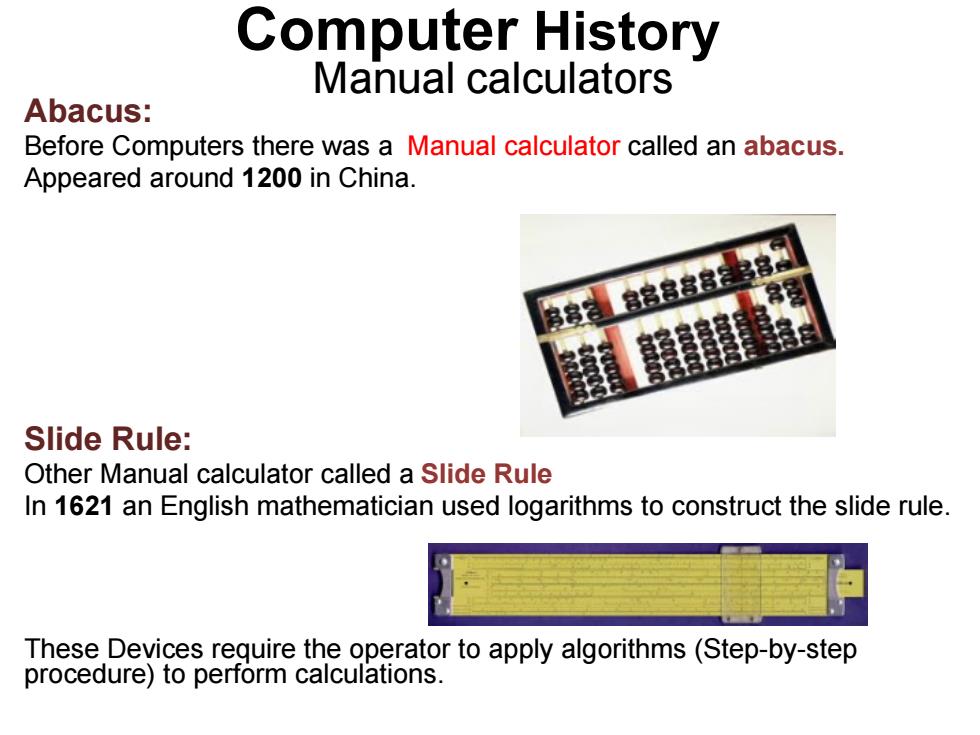
Computer History Manual calculators Abacus: Before Computers there was a Manual calculator called an abacus. Appeared around 1200 in China. Slide Rule: Other Manual calculator called a Slide Rule In 1621 an English mathematician used logarithms to construct the slide rule These Devices require the operator to apply algorithms(Step-by-step procedure)to perform calculations
Computer History Abacus: Before Computers there was a Manual calculator called an abacus. Appeared around 1200 in China. Slide Rule: Other Manual calculator called a Slide Rule In 1621 an English mathematician used logarithms to construct the slide rule. These Devices require the operator to apply algorithms (Step-by-step procedure) to perform calculations. Manual calculators
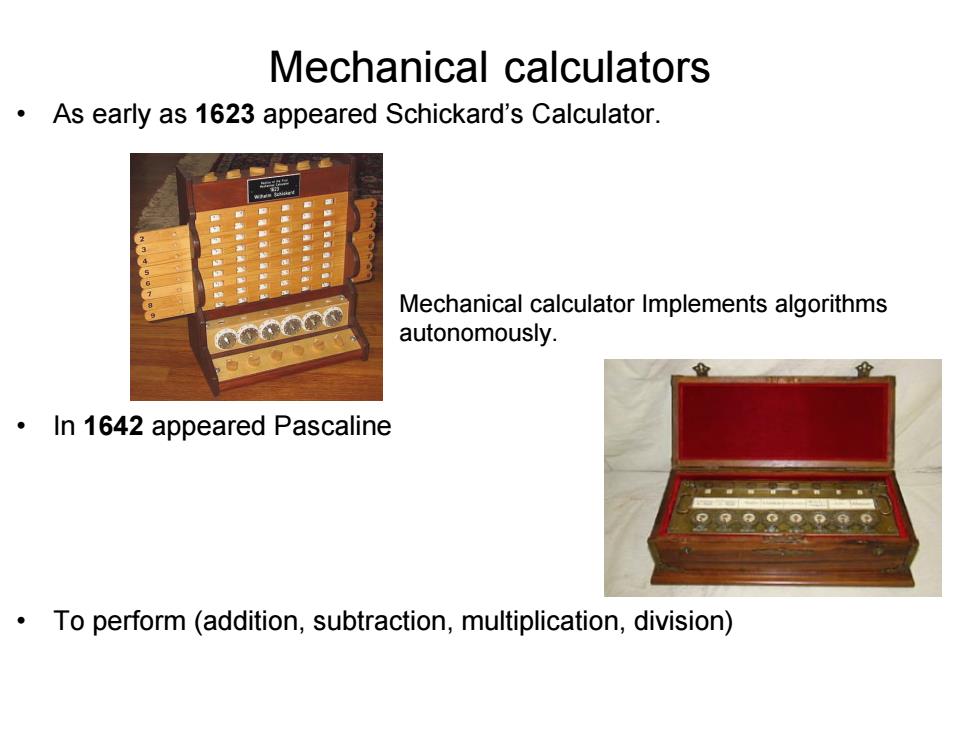
Mechanical calculators As early as 1623 appeared Schickard's Calculator. Mechanical calculator Implements algorithms autonomously. In 1642 appeared Pascaline To perform(addition,subtraction,multiplication,division)
• As early as 1623 appeared Schickard’s Calculator. • In 1642 appeared Pascaline • To perform (addition, subtraction, multiplication, division) Mechanical calculators Mechanical calculator Implements algorithms autonomously
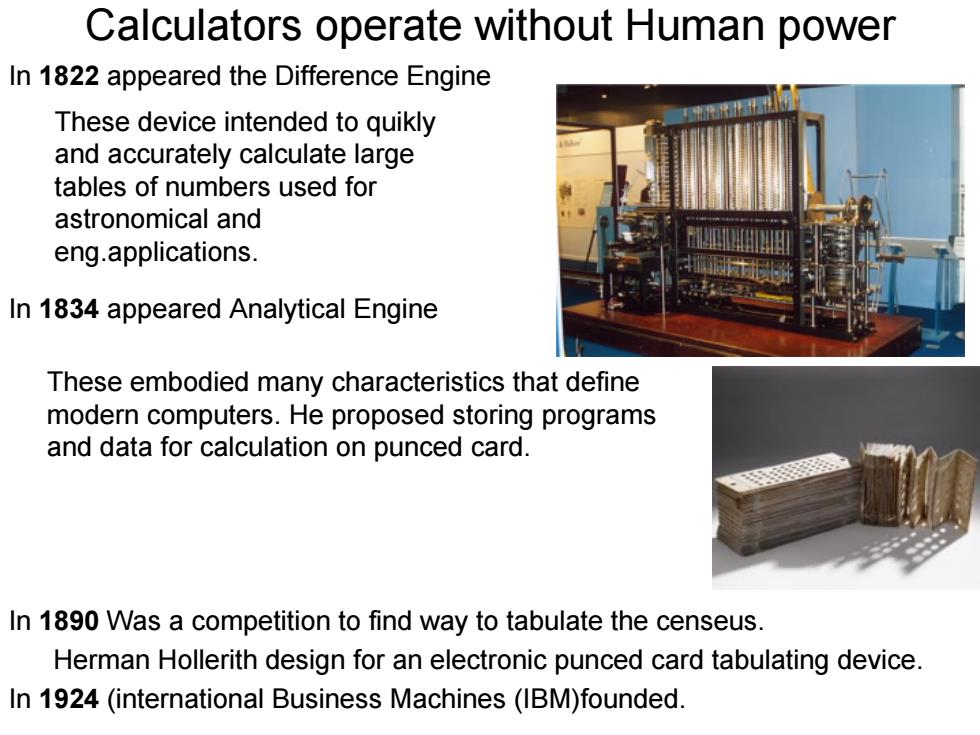
Calculators operate without Human power In 1822 appeared the Difference Engine These device intended to quikly and accurately calculate large tables of numbers used for astronomical and eng.applications. In 1834 appeared Analytical Engine These embodied many characteristics that define modern computers.He proposed storing programs and data for calculation on punced card. In 1890 Was a competition to find way to tabulate the censeus. Herman Hollerith design for an electronic punced card tabulating device. In 1924(international Business Machines(IBM)founded
Calculators operate without Human power In 1822 appeared the Difference Engine In 1834 appeared Analytical Engine In 1890 Was a competition to find way to tabulate the censeus. Herman Hollerith design for an electronic punced card tabulating device. In 1924 (international Business Machines (IBM)founded. These device intended to quikly and accurately calculate large tables of numbers used for astronomical and eng.applications. These embodied many characteristics that define modern computers. He proposed storing programs and data for calculation on punced card
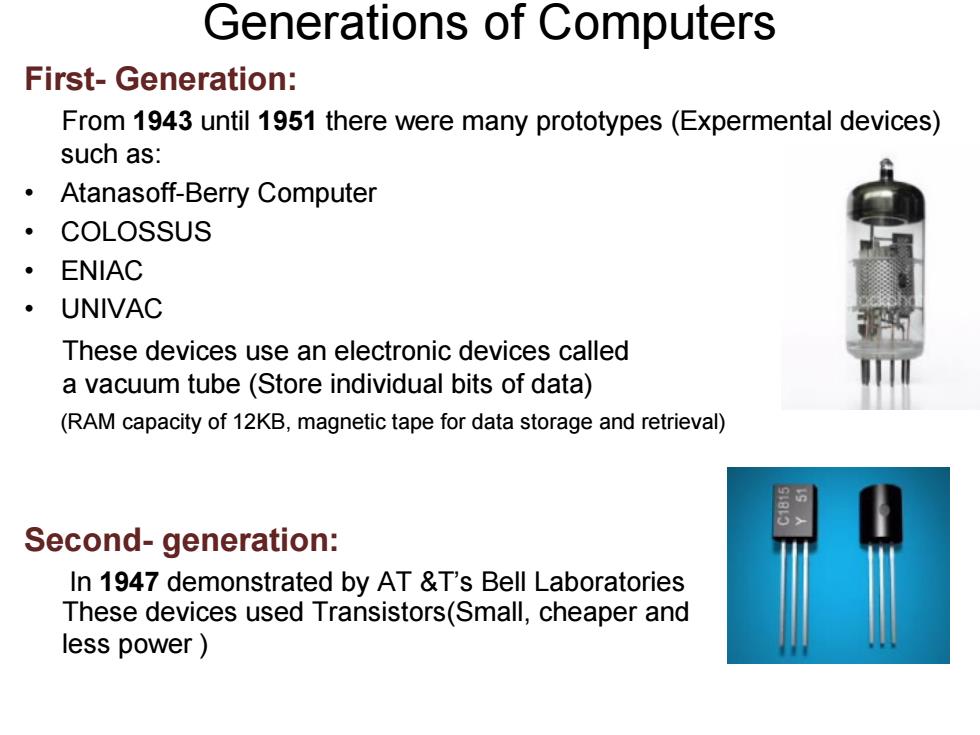
Generations of Computers First-Generation: From 1943 until 1951 there were many prototypes(Expermental devices) such as: 。 Atanasoff-Berry Computer COLOSSUS ENIAC UNIVAC These devices use an electronic devices called a vacuum tube(Store individual bits of data) (RAM capacity of 12KB,magnetic tape for data storage and retrieval) Second-generation: In 1947 demonstrated by AT &T's Bell Laboratories These devices used Transistors(Small,cheaper and less power
First- Generation: From 1943 until 1951 there were many prototypes (Expermental devices) such as: • Atanasoff-Berry Computer • COLOSSUS • ENIAC • UNIVAC (RAM capacity of 12KB, magnetic tape for data storage and retrieval) Second- generation: In 1947 demonstrated by AT &T’s Bell Laboratories Generations of Computers These devices use an electronic devices called a vacuum tube (Store individual bits of data) These devices used Transistors(Small, cheaper and less power )
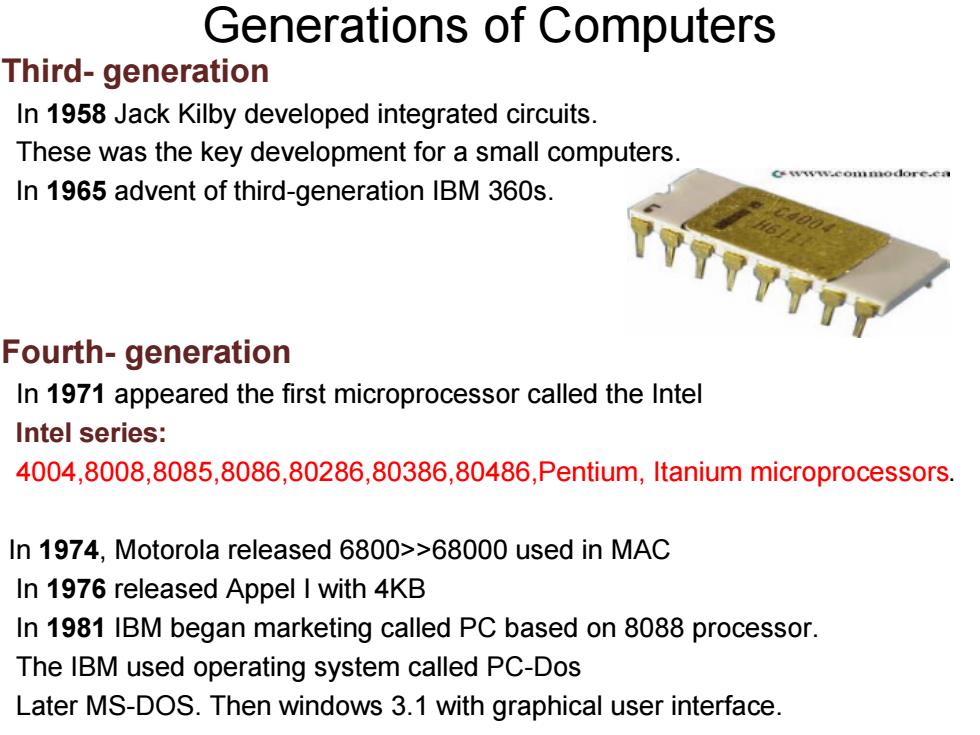
Generations of Computers Third-generation In 1958 Jack Kilby developed integrated circuits These was the key development for a small computers. In 1965 advent of third-generation IBM 360s. Fourth-generation In 1971 appeared the first microprocessor called the Intel Intel series: 4004,8008,8085,8086,80286,80386,80486,Pentium,Itanium microprocessors. In 1974,Motorola released 6800>>68000 used in MAC In 1976 released Appel I with 4KB In 1981 IBM began marketing called PC based on 8088 processor. The IBM used operating system called PC-Dos Later MS-DOS.Then windows 3.1 with graphical user interface
Third- generation In 1958 Jack Kilby developed integrated circuits. These was the key development for a small computers. In 1965 advent of third-generation IBM 360s. Fourth- generation In 1971 appeared the first microprocessor called the Intel Intel series: 4004,8008,8085,8086,80286,80386,80486,Pentium, Itanium microprocessors. In 1974, Motorola released 6800>>68000 used in MAC In 1976 released Appel I with 4KB In 1981 IBM began marketing called PC based on 8088 processor. The IBM used operating system called PC-Dos Later MS-DOS. Then windows 3.1 with graphical user interface. Generations of Computers